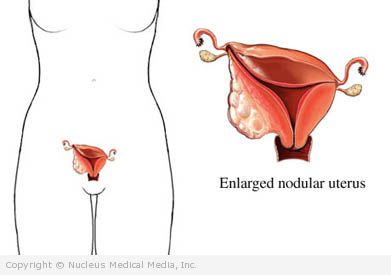(Endometrial Cancer; Cancer, Uterine; Cancer, Endometrial; Endometrial Adenocarcinoma)
Uterine cancer – Definition
Uterine cancer is a disease in which cancer cells grow in the uterus (womb).
The lower portion of the uterus, which is closest to the vagina, is called the cervix. When cancer develops in this portion, it is called cervical cancer.
The walls of the uterus (not including the cervix) are made of the endometrium (the inner lining) and the myometrium (the muscular, outer lining). The most common type of uterine cancer, called adenocarcinoma, begins in the endometrium. Less common cancers, called sarcomas, begin in the myometrium. This fact sheet will focus on endometrial cancer.
Cancer occurs when cells in the body (in this case uterus cells) divide without control or order. Normally, cells divide in a regulated manner. If cells keep dividing uncontrollably when new cells are not needed, a mass of tissue forms, called a growth or tumor. The term cancer refers to malignant tumors, which can invade nearby tissue and spread to other parts of the body. A benign tumor does not invade or spread.
Uterine cancer – Causes
The exact cause of uterine cancer is unknown. Exposure to estrogen seems to be strongly related to the development of this cancer.
Uterine cancer – Risk Factors
These factors increase your chance of developing endometrial cancer. Tell your doctor if you have any of these risk factors:
- Age: 50-60 years old
- Obesity (especially in women experiencing menopause early, before age 45)
- High blood pressure
- Polycystic ovary syndrome
- Endometrial polyps
- Infertility
- No history of pregnancy
- Early start of menstrual periods
- Late menopause (longer exposure to estrogen)
- Diabetes
- Environment: living in an urban area
Uterine cancer – Symptoms
If you have any of these symptoms do not assume it is due to uterine cancer. These symptoms may be caused by other conditions. Tell your doctor if you have any of these:
- Abnormal bleeding between menstrual periods
- Vaginal bleeding or spotting in postmenopausal women
- Pain in the pelvic area
- Pain during urination
- Pain during intercourse
Uterine cancer – Diagnosis
The doctor will ask about your symptoms and medical history.
Tests may include:
- Blood and urine tests
- Pelvic exam — examination of the vagina, uterus, ovaries, bladder, and rectum
- Pap test — scraping and testing tissue from the inside of the cervix and upper vagina
- Biopsy of the uterine lining — removing a sample of tissue from the uterine lining for testing
- Dilation and curettage (D&C) — procedure to get a sample of tissue from the uterine lining
Uterine cancer – Treatment
Once uterine cancer is found, staging tests are done to find out if the cancer has spread and, if so, to what parts of the body. Treatments for uterine cancer depend on the stage of the cancer. Special instructions will be given to you regarding your treatment.
Treatments include:
Surgery
A hysterectomy may be done to remove the uterus, fallopian tubes, ovaries, and possibly nearby lymph nodes.
Radiation Therapy
This is the use of radiation to kill cancer cells and shrink tumors. Radiation may be:
- External radiation therapy — radiation directed at the tumor from a source outside the body
- Internal radiation therapy (brachytherapy) — radioactive materials placed into the body near the cancer cells
Hormone Therapy
Drugs may be used to control cancer cells outside the uterus. This treatment is for women unable to have surgery, or who have recurrent cancer, or cancer that has spread (metastasized).
Chemotherapy
This is the use of drugs to kill cancer cells. Chemotherapy may be given in many forms including: pill, injection, and via a catheter. The drugs enter the bloodstream and travel through the body killing mostly cancer cells, but also some healthy cells. Chemotherapy may have limited benefit for treating endometrial cancer.
Uterine cancer – Prevention
All women should have yearly pelvic exams to monitor any changes that may signal cancer. Using oral birth control may protect against uterine cancer.

